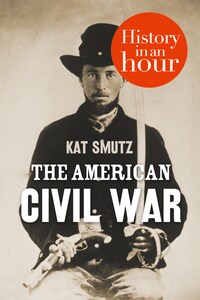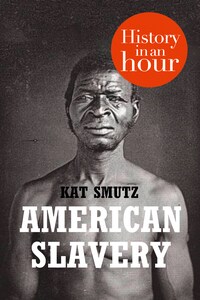About History in an Hour
History in an Hour is a series of ebooks to help the reader learn the basic facts of a given subject area. Everything you need to know is presented in a straightforward narrative and in chronological order. No embedded links to divert your attention, nor a daunting book of 600 pages with a 35-page introduction. Just straight in, to the point, sixty minutes, done. Then, having absorbed the basics, you may feel inspired to explore further.
Give yourself sixty minutes and see what you can learn . . .
To find out more visit: http://historyinanhour.com or follow us on twitter: http://twitter.com/historyinanhour
Introduction
The Confederate States can no longer delay assuming actual possession of a fortification commanding the entrance of one of their harbors.
Brigadier General P. G. T. Beauregard to Major Robert Anderson, Charleston, South Carolina, 11 April 1861
It was early on a Friday morning in the spring of 1861 that the American Civil War began. At 4.30 a.m. on 12 April, Confederate forces in Charleston Harbor, South Carolina, were ordered to open fire on Fort Sumter where Union forces were entrenched. The State of South Carolina had led the way in seceding from the Union, and had been joined by several other slave states in forming a separate government called the Confederate States of America. But the United States and its new president, Abraham Lincoln, refused to recognize the Confederacy as a country, and refused to withdraw Union troops from Southern positions, including the one in Charleston Harbor. Confederate commander Brigadier General P. G. T. Beauregard had sent word to Union commander Major Robert Anderson advising him that he and his troops must leave. When Anderson refused, Beauregard’s troops opened fire. The next day, a Saturday, the Union commander, Major Robert Anderson, knew that he was outnumbered, out of food and out of options. The first engagement of the American Civil War had been fought, and the Confederate States of America was the victor. More than 40,000 shells had been dropped on the fort that sat on a spit of land in the harbour, and yet there were few wounded and no casualties.
The bombardment of Fort Sumter was the first actual engagement between Union and Confederate forces, and is considered the official beginning of the American Civil War. However, the storm clouds of conflict had been gathering for some time before those first shots were fired. When the First Continental Congress presented their Declaration of Independence to the country in 1776, it included the promise of ‘life, liberty, and the pursuit of happiness.’ They neglected to mention that the promise was limited to white males. But it didn’t go unnoticed.
Despite the resistance to the inequality inherent in the Declaration of Independence, the US president, Abraham Lincoln, went to war not for the benefit of slaves or in support of the cause of abolitionism, but for the preservation of the Union.
Four years later, the war was won, the Confederate States of America had ceased to exist, and through Lincoln’s Emancipation Proclamation, slaves were free. But peace had come at a high cost and to this day the American Civil War remains the bloodiest conflict in America’s history. And with the end of the war came the difficult years of Reconstruction. Lincoln was dead, felled by an assassin’s bullet, the South lay in ruins and the legacy of conflict would affect the US for decades to come.
This, in an hour, is the American Civil War.
From One Revolution to Another
After the American Revolution ended in 1783, there were those who took notice that slaves had no rights at all, much less freedom. A war had been fought with the intent of liberty for all, and yet women, Africans, African-Americans, and Native Americans still had no voice and no rights in the governing and development of the nation that had just been born. They had all done their part in the fight for freedom, only to be excluded once the fight was done. And so the first seeds of dissent were sown, and the growing discontent would end with the American Civil War.
Slaves picking cotton
It was an issue that would eventually divide the fledgling nation. In the North, slave labour was used, but it was not as crucial to industrial growth as it was in the Southern states, where the economy was based upon agriculture (pictured above). In the North, the State of Pennsylvania was the first to enact a plan that would gradually set free their slaves, with the aim of eventually abolishing slavery. But as other states in the North began to follow the growing anti-slavery movement, the South felt threatened by the possibility that abolition would spread until it was illegal to own slaves at all.









